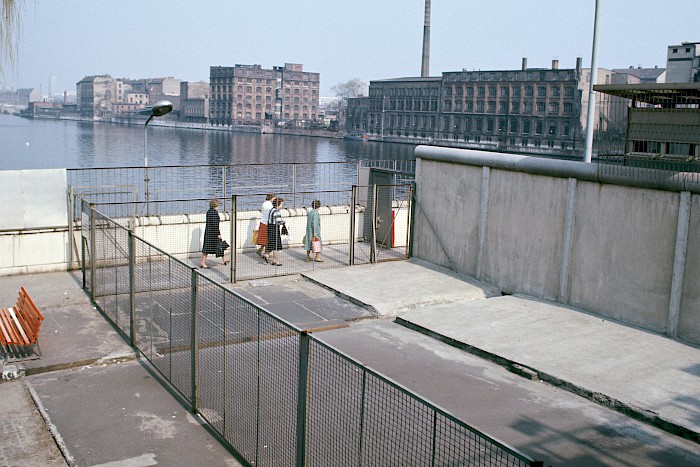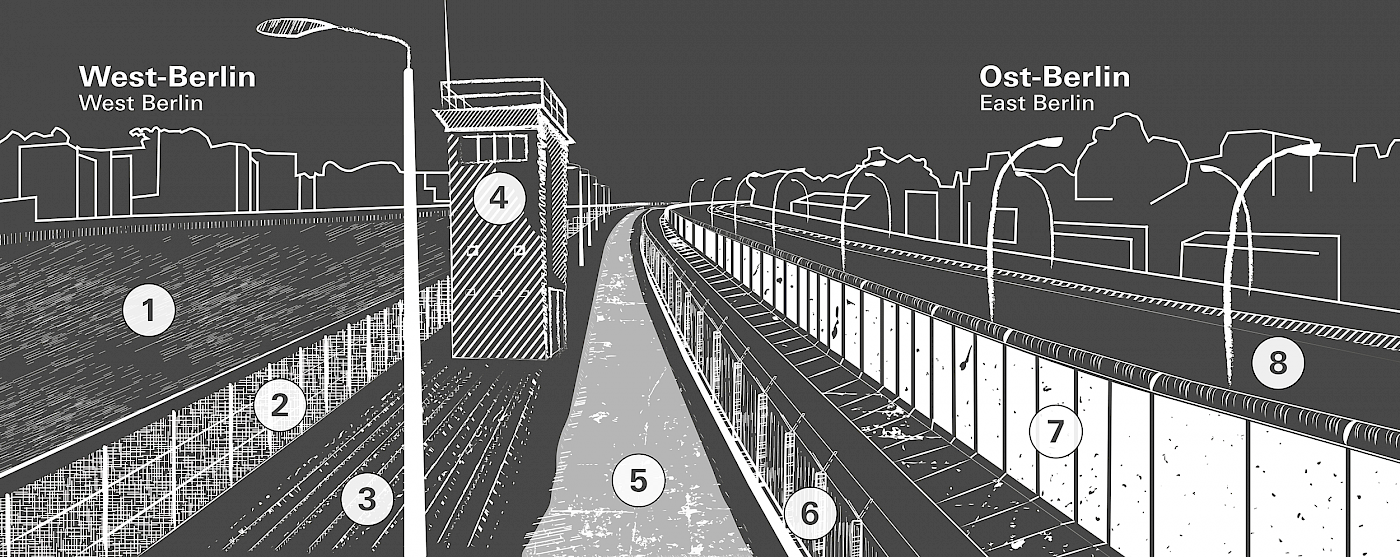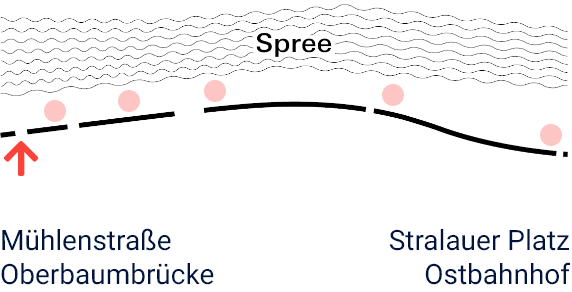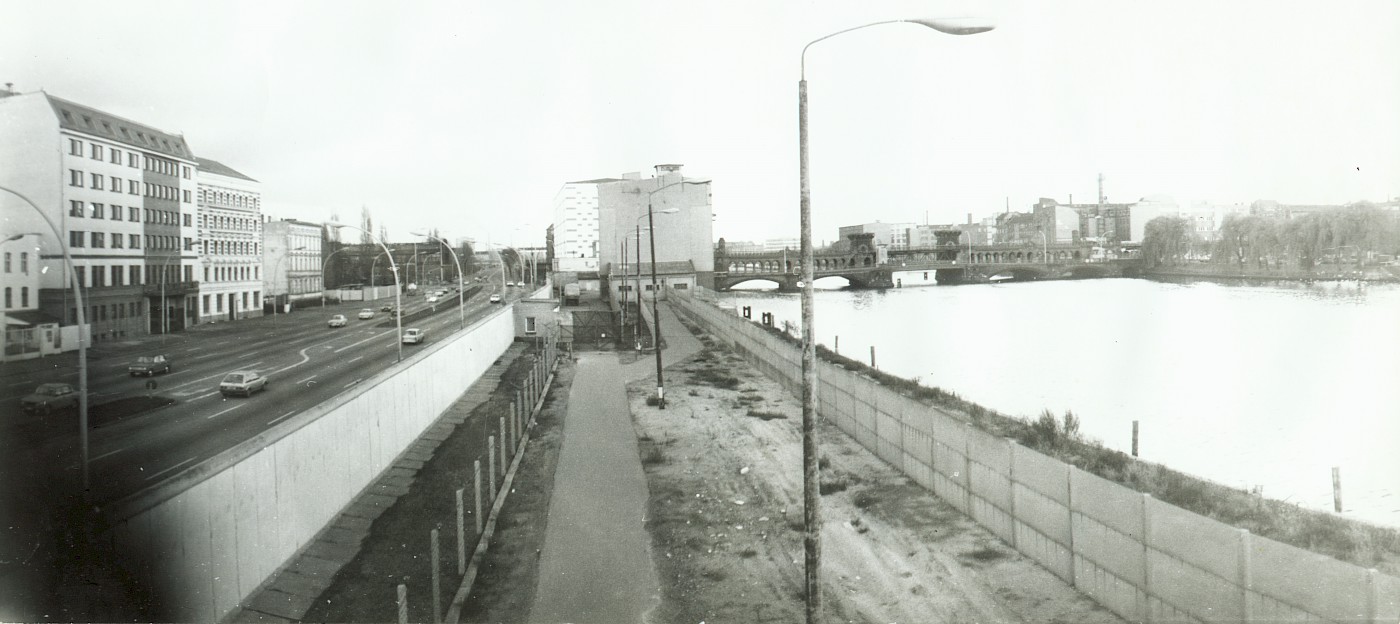EastSideGallery
MonumenttoJoy
A few weeks after the Wall fell in November 1989, West Berliner David Monty and East Berliner Heike Stephan announced their idea to turn the Berlin Wall into the longest gallery in the world. The GDR government approved the painting action and assigned them the 1.3-km-long wall in Mühlenstraße. 118 artists from 21 countries responded to the call for applications and submitted designs to Monty’s Scottish assistant, Christine MacLean, organising the action. The opening of the East Side Gallery was celebrated with a big party on 28 September 1990. With their messages and comments, the artists raised a monument to the joy at seeing the Wall come down and the Cold War overcome. Yet some critical comments were also made. In the following years the Gallery was restored and changed several times. But it still tells of the sense of new beginnings in 1990.
The Berlin Wall
At Mühlenstraße the entire width of the Spree belonged to East Berlin. The territory of West Berlin ended at the riverbank in Kreuzberg. In 1961, Oberbaumbrücke bridge was walled up and access to the Spree blocked off by fences on the bank at Mühlenstraße. From 1977 onwards, the Border wall which can still be seen today blocked access to the river. GDR border soldiers patrolled behind the wall. They were under orders to stop fugitives at all costs — by shooting if necessary. Seven people died here in the border area trying to escape across the Spree, three of them were shot. In 1972 a border crossing was set up on Oberbaumbrücke. Here it was possible to pass on foot from West Berlin to East Berlin, and pensioners from the GDR were able to travel to West Berlin.



 Leichte Sprache
Leichte Sprache